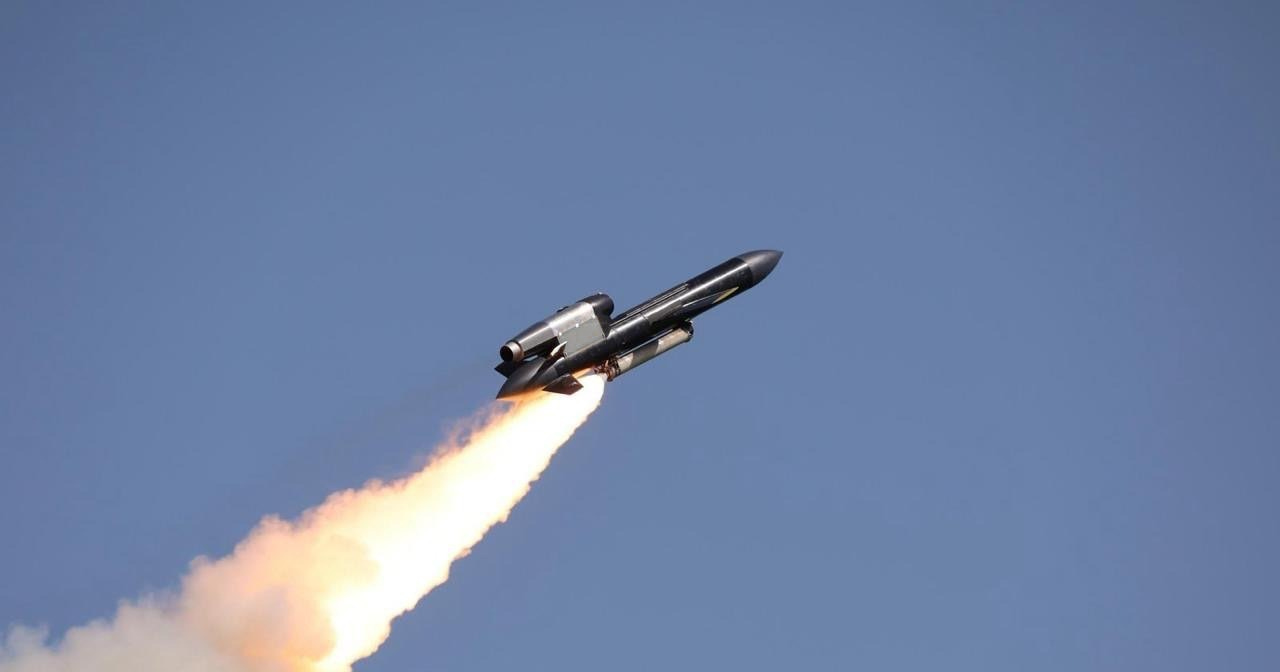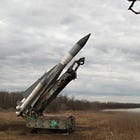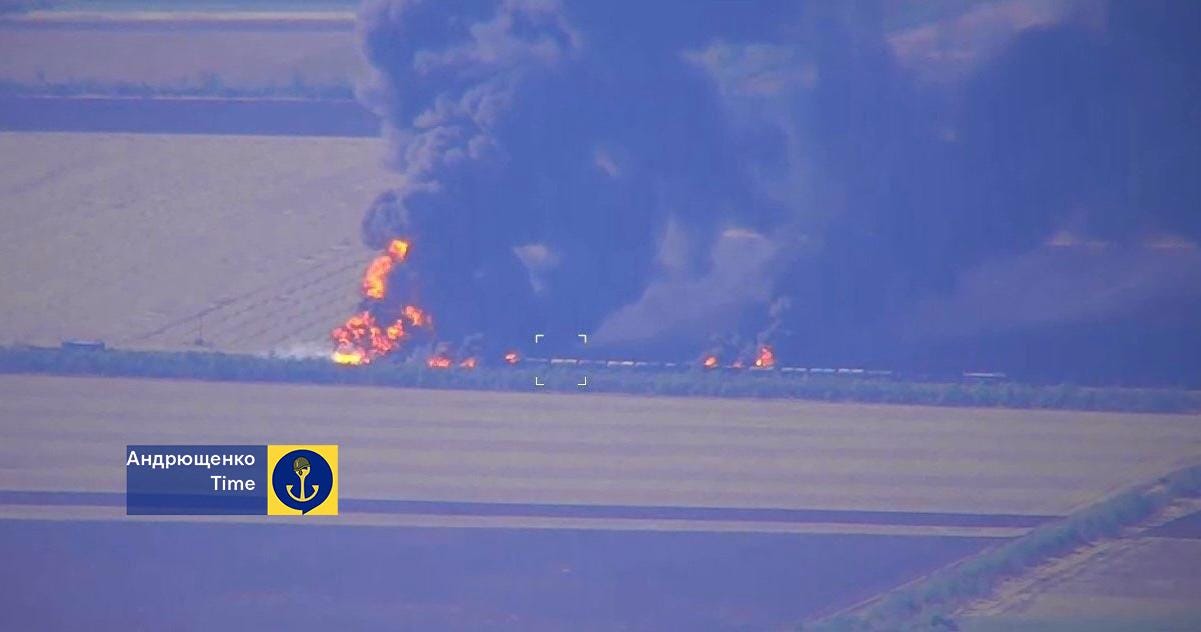Why Ukraine's New Cruise Missile Is Actually Kind Of A Big Deal
Not a Wunderwaffen, just a very potent weapon

The long-range war has been an occasional focus of this website since 2023, when Ukraine began their deep-strike campaign with a spectacular, though ineffective, attack on the Kremlin. More an announcement than an attack, it was spectacular because Ukraine had managed to repurpose cheap flight technology to send explosives a very great distance. It was ineffective because the drone could only carry a small payload.
Until now, this has been the general problem for Ukrainian long-range weapons: they have managed to achieve impressive accuracy at great distances, but only with relatively small explosions at the end. A civilian plane converted into a drone bomb can destroy an oil storage tank, for example, but not a whole weapons factory. Flamingo, the new Ukrainian flying bomb built by a startup called Fire Point, drastically raises the destructive efficiency of an individual strike.
Moreover, Ukraine has spent two years systematically unravelling Russian air defenses, created huge gaps to exploit, before introducing this absolute unit. According to Volodmyr Zelenskyy, Flamingo is already “the most successful missile we have.” Zelenskyy told Ukrinform that production is being scaled up. “By December, we will have more of them. And by the end of December or in January-February, mass production should begin,” he said. Huge, if true. Maybe even game-changing. We don’t use those words around here very often.
The more I see of Flamingo, the more I like it. Worries about the radar cross-section seem pointless when saturation of Russian air defenses is the point. For engineers, the mass of an electronic warfare payload for jamming Russian radars is almost a rounding error compared to the warhead. It is a simple design for mass production to get the maximum weight of kaboom to a target. It might even be cheaper per unit than an S-300 air defense missile, which would make the question moot through sheer economics.
Unlike an S-200, which must be fired from a fixed site, the Flamingo launches from a sled that apparently can be towed by a standard V-12 pickup truck. Every Flamingo can be fired from an entirely new launch site and Russian air defenses will have only limited early warning, if any, when a sudden volley of them goes streaking towards a significant target. As seen in this video, the Flamingo uses a rocket booster to reach cruising altitude, whereupon the jet engine takes over and the booster falls away.
“Ukraine’s giant Flamingo cruise missile appears to use an Ivchenko AI-25TL turbofan engine repurposed from an Aero L-39 jet trainer,” missile and drone afficianado Fabian Hinz says on X. “Miniaturized turbofans for cruise missiles and UAV are very hard to get and very expensive. Larger turbofans for manned applications like the L-39 can be easily and cheaply acquired on the global market. If you do not care about the missile's size, it's a smart approach.”
Here is an Associated Press clip of an interview with Chief Technical Officer Iryna Terekh, who engineered the Flamingo for Fire Point, the startup company that makes it. Terekh says the facility is building one flying bomb per day, should be up to seven per day by October, and will ideally reach mass production by January, so that Ukraine produces thousands of these in a year. Each Flamingo carries over 2,500 lbs (1,115 kg) of explosives. Note that, consistent with reports about Ukrainian munitions plants, this facility appears to be located underground. If so, then a Flamingo would not be enough to destroy the facility in which it is built.
This is a major strategic point, because Russia built their Shahed drone factory above ground, and now it lies within range of the Flamingo. Until now, Ukrainian drones lacked the explosive power to inflict serious damage to it. “Ukraine is now able to move from the light missile capabilities, the long range drones and mini cruise missiles towards what you could refer to as a heavy missile capability, the ‘heavy hitters’ that are equipped with a much more significant payload capacity,” missile expert Fabian Hoffmann tells Ukrinform.
“Now this allows Ukraine to threaten pretty much any target west of the Urals. It means that Russia's strategic depth, to which it has access in order to move those targets out of range, has potentially been nullified and is no longer an advantage,” Hoffmann adds.
And: “Having an arsenal of such missiles will also be crucial in the post-war period, when Ukraine will need to develop effective deterrence capabilities against renewed aggression,” Ukrinform paraphrases. In other words, the timing of the reveal is not accidental. Flamingo is meant to secure the long-term peace of Ukraine in the event of a ceasefire.
“It took less than nine months to develop it from an idea to its first successful tests on the battlefield,” Terekh tells the AP. “It is completely Ukrainian-made,” therefore immune to the mercurial policies of American presidents. “The missile is said to feature a satellite navigation-assisted inertial navigation system guidance package that is also designed to be resistant to electronic warfare attacks,” the primary means by which both sides have defended against ranged-strike weapons during the war, according to TWZ.
Rumors have swirled over Ukrainian partnerships that may be responsible for this development. German, French, and British assistance have all been credited without proof. Meanwhile, The War Zone also notes that “the Flamingo is extremely similar, if not identical to a cruise missile design called the FP-5 previously exhibited by Milanion, a company based in the United Arab Emirates.”
This same firm has provided materiel to the Ukrainian armed forces in the past. Whether the “FP” in FP-5 stands for Fire Point is unknown.
Milanion says that the FP-5 also has a 1,864-mile/3,000-kilometer maximum range. A fact sheet on the company’s website, reproduced below, also lists a top speed of 590 miles per hour (950 kilometers per hour) and a cruising speed of 528-559 miles per hour (850–900 kilometers per hour).
Of course, a company “based in the Emirates” could easily serve as the storefront for a Ukrainian missile startup. Upon examination, the Milanion FP-5 system does look strikingly similar to the Flamingo. Even the trailer-mounted erector-launch rack is similar, though it is not exactly the same as what is in the image. Of course, the image is just a graphic mock-up of the design, so we should expect small differences of detail in the actual finished product.
“It is very hard, if not impossible, to win a war without attacking an invader’s country,” President Donald Trump opined this week on Truth Social. “It’s like a great team in sports that has a fantastic defense, but is not allowed to play offense,” Trump said, adding that “Joe Biden would not let Ukraine FIGHT BACK, only DEFEND. How did that work out?”
Trump was likely referring to the reported fears of the Biden administration that Ukrainian strikes on Russian oil infrastructure would spike gasoline prices in an election year. While it is true that most wars are measured in territory, all wars are fundamentally macroeconomic affairs, and Flamingo is a direct threat to Russia’s economic infrastructure.
Already, the recent wave of Ukrainian strikes on Russian oil facilities has produced an energy crisis in Russia. “Russia has lost roughly 13% of its oil-refining capacity since early August as Ukrainian drones have hit at least seven Russian refineries, forcing four to shut down completely,” The Moscow Times reports. “A separate bottleneck has emerged on the Russian Railways network, where fuel trains bound for Vladivostok have been delayed for up to two weeks.”
In the Russian Far East, fuel is being rationed, many gas stations are empty, and drivers are queued for hours at the remaining stations, or else abandoning their vehicles altogether. Gasoline is only available with coupons in Crimea. “The supply crunch caused by the refinery shutdowns has sent wholesale gasoline prices to record highs,” Moscow Times says.
On Monday, Russian business news website Kommersant euphemistically referred to “accidents at the refinery” that have reduced processing capacity by “about 1.5 million barrels per day” in just the previous week. Russian officials insist “stabilization of the situation is possible by October, when the holiday season and peak demand period finally end,” but in the meantime, the fuel shortage is hitting Russians hardest on the battlefront. Russia has already imposed an export ban on gasoline and now there is talk of importing gasoline from Belarus.
This is what Ukraine has managed with only small explosive payloads on light, slow drones. Now imagine what they will do to the Russian oil economy with missiles that reach all the way to the Ural mountains, strike within 14 feet of a target, and detonate at that spot with more than a ton of high explosives. Flamingo could very well hasten the end of the war, and then it may help deter a future Kremlin from trying again.
Ukraine Intensifies The Drone Campaign Against Russian Rail Logistics
“There is no more Russian rail service through occupied Zaporizhzhia,” Petro Andryushchenko, head of the Center for the Study of Occupation, wrote on Telegram Tuesday. Promising proof “when the sources are safe,” Andryushchenko had reported on Monday




